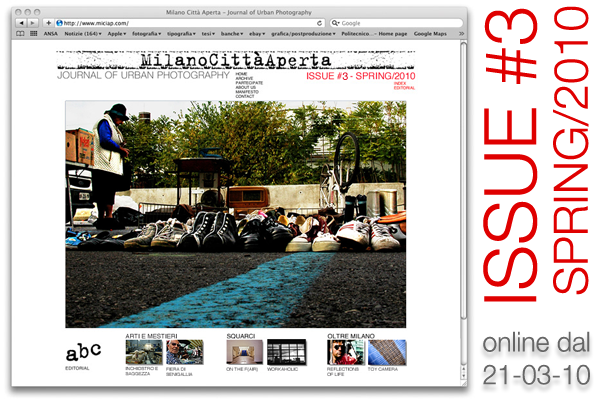MilanoCittŕAperta
During World War II, some European cities were declared “open” by military forces. This way, foreign armies left the inhabitants the possibility of abandoning their houses, without completely destroying the historical and artistic resources and architecture (a promise which was rarely kept). Among the “open cities” were Rome, Florence, Paris, Athens. Milan was never declared an “open city”. This partly explains why the (Stella mountain), a symbol of post-war reconstruction, was born from the burial of over a million hundred kilos of rubble resulting from the English-American bombings.
World War II had recently ended and Milan, as all the major Italian cities were doing, was working hard to rebuild what was lost. After burying its dead and debris, development was the first thought in people’s mind. The majority of the population still thinks a society’s progress is determined more by the quantity than the quality of its resources. That’s why reconstruction wasn’t only about re-building, but also infinitely expanding, enlarging, developing. History can’t be stopped.
A social conflict is still happening: one between the past and the present, between the (presumed) needs and the (real) hopes. This conflict has no beginning nor an end, no conflicts or perspectives. It’s inexorable. If we could give it a name, it would be “Time”. Man relates himself to Time and its work of creation and destruction, unable to accept defeat before fighting, using all the weapons he has. Looking at the ruins of the past, Man tries to create a future imagining a new History. Today, Man has become a Citizen to carry on his battle inside a more apt environment: the big metropolis. The end of the War, despite everything, was still very far.
As Benjamin wrote about Klee’s painting of the Angelus Novus: “The angel of history must have this characteristic: his face must be turned towards the past. Whereas we see a chain of events, he sees only one catastrophe that accumulates ruins on ruins and throws them at his feet (…) But a tempest pushes him towards the future, despite him turning his back to it (…) This tempest is what we call progress.”
History, says Benjamin, is not a linear chain of events and the capitalist era’s progress doesn’t necessarily bring to Paradise. In the modern world, Man’s existential dimension coincides more and more with the essence of the industrialized City and one’s past is contained in the other’s time.
The individual’s alienation, confused in the crowd, constitutes one of the fundamental themes of Western culture, from Baudelaire on. What’s left of our lost paradise, then? How to save oneself from the crowd? Italo Calvino answers at the end of Invisible Cities: “Hell is already here. There are two ways to avoid suffering from it. The first is easy for many: accepting hell and becoming a part of it until one doesn’t see it anymore. The second is risky and needs continuous attention and learning: Trying to understand and being able to understand who and what, amongst hell, is not hell, and make it last, and give it space”.
Good, but how is it possible to give space to what deserves to be saved? Most of all, how can we “make it last”?
We’ve reached the topical point of our discussion. This question is the beginning of the journey that our magazine wants to undertake. [Let’s try to answer: the essence of the past is in passing but it’s possible to fix it in the image flashing once and for all in a moment where it’s possible to know it.] “The truth can’t escape” says Benjamin. This is a possible answer: Photography goes beyond War.
As the philosopher Giorgio Agamben says, everything that is photographed will be called to appear on Judgment Day. The photographic image is the place of a sublime break between what’s substantial and what isn’t, between a copy and a reality, between memory and hope. If we can’t possess the present but only the past, if all we can have is an image of our mortality, then the photographer becomes the new “flâneur”, the poet of the modern age and the vagabond of eternity. Henri Cartier-Bresson remembers: “I used to hang around the streets all day, feeling very tense and ready to throw myself into things, determined to “trap” life, to stop life in the moment it’s being lived.”
A photographer is like a hunter, his camera is like a rifle. In every shot, a fragment of life is captured forever, taken away from possible changes and given to eternity. A photographer, then, has the opportunity of offering to society his ethical vision through an aesthetic vision, and vice versa. That’s the aim of our magazine.
Heirs to the tradition of photojournalism born in the ‘50s thanks to Magnum cameras, and aware of the social and artistic research of the past century, we’re trying to insert ourselves in this path with our eyes (and our lens) looking at the future. We want to delve into reality, freeing its secrets, using photography to make our first-person experience concrete. We finally want to declare Milan an “open city” and we accept our war within the chaotic continuous changes of our city. This city that we, as photographers, wish to understand and be understood. So that we can change it.


